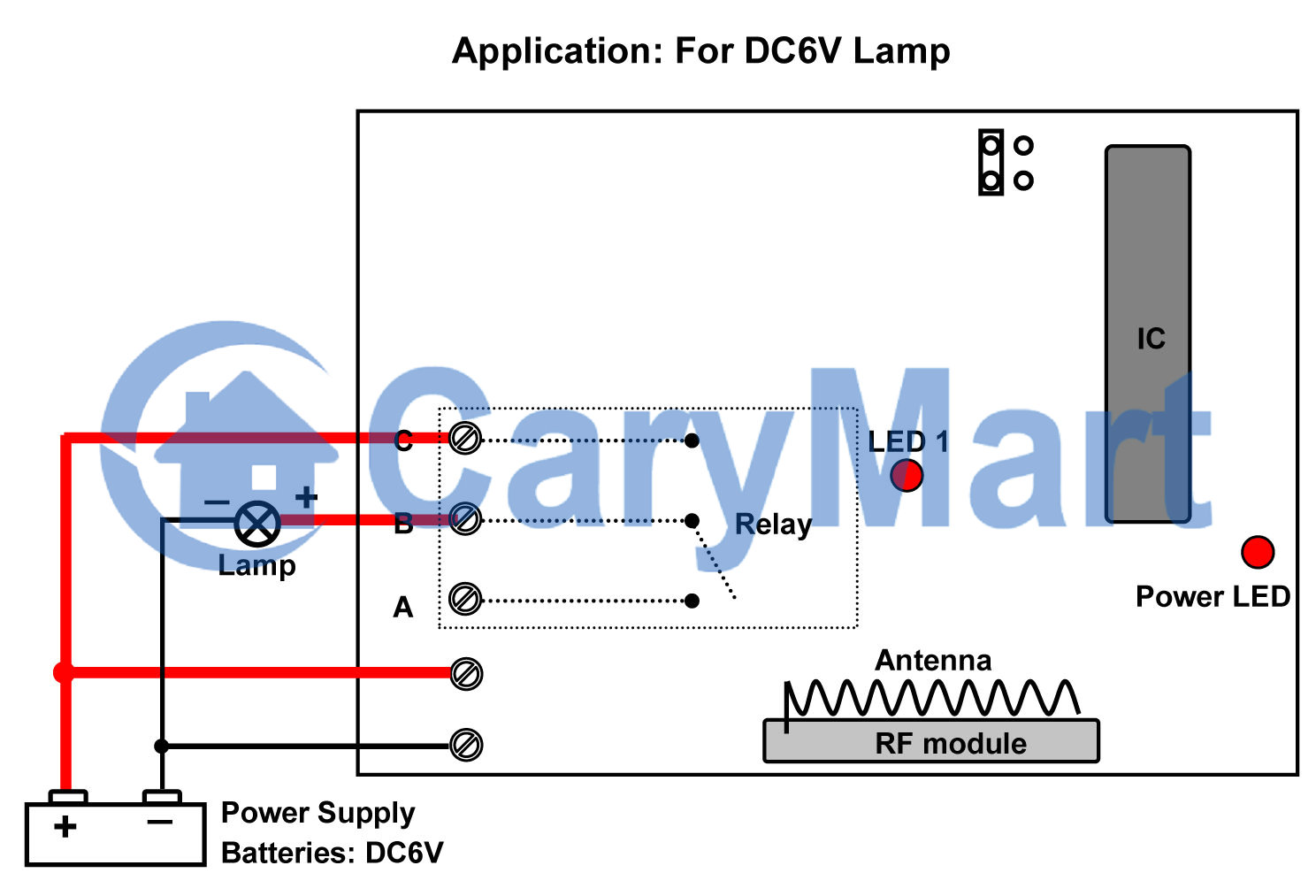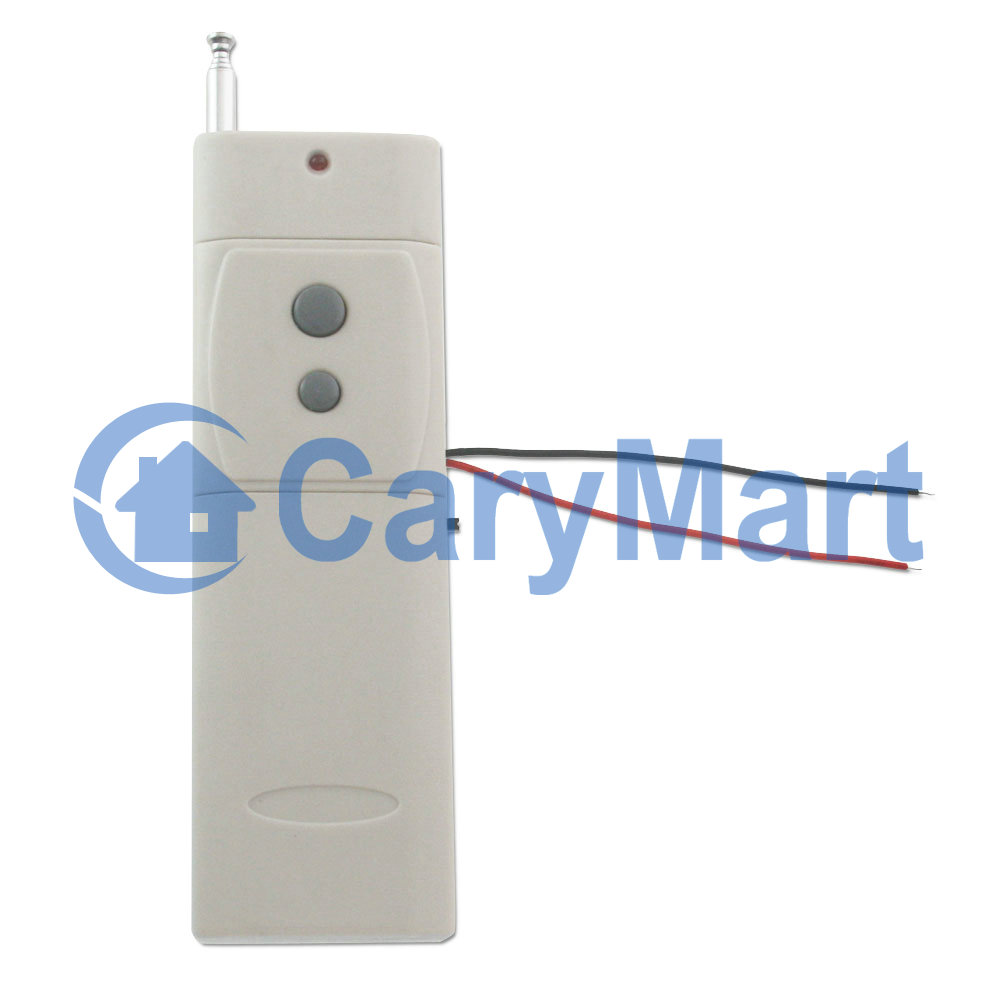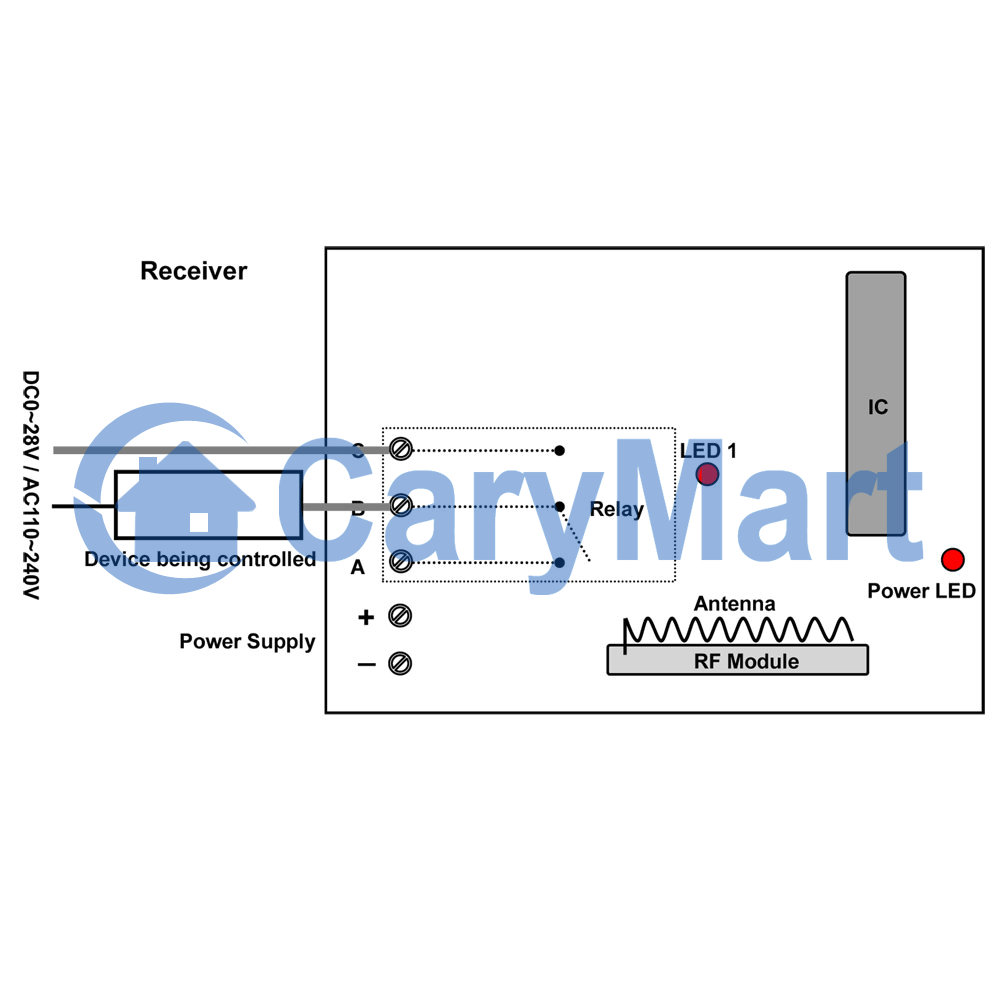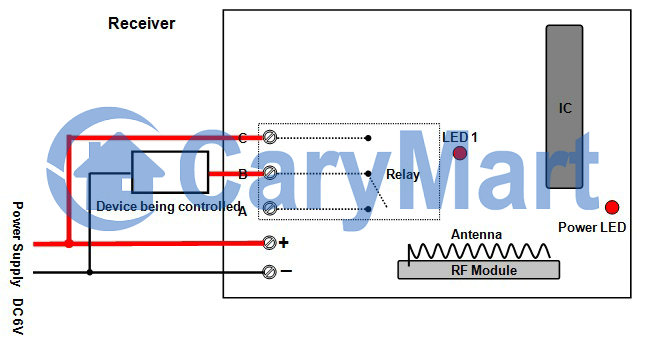This 1 channel dc RF remote control switch features in controlling relay off time delay. Delay time can be customized according to actual requirement. It is widely applied to control lights, motors, fans, electrically operated doors / locks / windows / blinds or other electrical devices. It is activated in 6V power supply. You need provide us with the delay time you want when ordering. E.g. delay time: 20 seconds or 1 hour or 20 minutes… The delay time is not adjustable freely. Its working current is 10ampere and working distance is 100m (300ft).
It has normally open and closed contact. It controls various lights, fans or motors with voltage AC110~240V or DC0~28V. Here is the alternate current device wiring diagram and the wiring diagram of direct current device which not share the same power supply with receiver.
Of course, if you want to remote control direct current device which shares the same power supply with receiver, you need to do some different wiring from above wiring. Suppose that you want to remote control 6V lamp. So you don’t have to supply additional power for led lamp because led lamp will get power from powered receiver as long as you wire lamp to the receiver.
Here is the wiring procedure of 6V lamp which shares the same battery with receiver. The red wire from the lamp is connected to the C terminal of the receiver and black wire from the lamp is connected to the negative electrode of the power supply. The positive wire of the supply power is connected to B terminal and positive electrode of the receiver. The negative electrode of the power supply of power supply and receiver are connected together.
We set its delay time 20seconds.
Press button 1: Turn on the lamp. After 20seconds, turn off the lamp by itself.
During the delay time, press button 2: Turn off the lamp straightway.



 Follow
Follow










